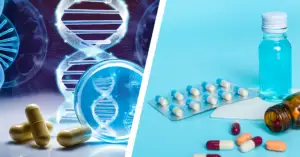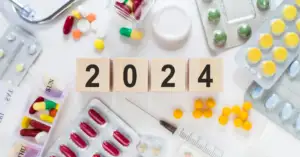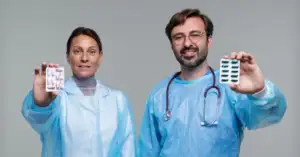To identify potential safety concerns such as unpleasant adverse effects of the medicines, ICH provides comprehensive guidelines that can be considered for therapeutic safety monitoring within the community. These safety guidelines are applicable during the non-clinical development of the new medicines. Safety assessment during the clinical trials and for the marketed medicines is considered under the GCP guidance. The nonclinical studies must conduct comprehensive toxicological and pharmacological programmes to establish reasonable safety of the drug being developed. Thus, the various parameters assessed include evaluation of carcinogenicity, genotoxicity, reprotoxicity, including cardiac safety such as QT interval prolongation etc. Thus, ICH guidelines on safety provide comprehensive guidelines that can help detect any safety associated alerts early during the development phase. In order to standardize regulatory requirements across many locations, these guidelines are drafted through international collaboration between regulatory authorities, academics and industry experts. The review of these guidelines and its revision is a dynamic process based on the newer insights and information available with continued research and development in the field of medicine. Here, we present the main titles of the various safety parameters considered by the ICH guidance during the nonclinical development.
S1A – S1C Carcinogenicity studies
- S1A- Need for Carcinogenicity Studies of Pharmaceuticals
- S1B(R1) EWG- Testing for Carcinogenicity of Pharmaceuticals
- S1C(R2)- Dose Selection for Carcinogenicity Studies of Pharmaceuticals
S2 – Genotoxicity studies
- S2(R1)- Guidance on Genotoxicity Testing and Data Interpretation for Pharmaceuticals Intended for Human Use
S3A – S3B Toxicokinetics and Pharmacokinetics
- S3A- Note for Guidance on Toxicokinetics: The Assessment of Systemic Exposure in Toxicity Studies
- S3A Q&As- Note for Guidance on Toxicokinetics: The Assessment of Systemic Exposure – Focus on Microsampling
- S3B- Pharmacokinetics: Guidance for Repeated Dose Tissue Distribution Studies
S4 – Toxicity Testing
- S4- Duration of Chronic Toxicity Testing in Animals (Rodent and Non Rodent Toxicity Testing)
S5 – Reproductive Toxicology
- S5(R2)- Detection of Toxicity to Reproduction for Medicinal Products & Toxicity to Male Fertility
- S5(R3)- Revision of S5 Guideline on Detection of Toxicity to Reproduction for Human Pharmaceuticals
- S5(R4) Maintenance EWG- Revision of S5 Guideline on Detection of Toxicity to Reproduction for Human Pharmaceuticals
S6 – Biotechnological Products
- S6(R1)- Preclinical Safety Evaluation of Biotechnology-Derived Pharmaceuticals
S7A – S7B Pharmacology Studies
- S7A- Safety Pharmacology Studies for Human Pharmaceuticals
- S7B- The Non-Clinical Evaluation of the Potential for Delayed Ventricular Repolarization (QT Interval Prolongation) by Human Pharmaceuticals
- E14/S7B IWG- Questions & Answers: Clinical and Nonclinical Evaluation of QT/QTc Interval Prolongation and Proarrhythmic Potential
S8 – Immunotoxicological Studies
- S8- Immunotoxicity Studies for Human Pharmaceuticals
S9 – Nonclinical Evaluation for Anticancer Pharmaceuticals
- S9- Nonclinical Evaluation for Anticancer Pharmaceuticals
- S9 Q&As- Questions and Answers: Nonclinical Evaluation for Anticancer Pharmaceuticals
S10 – Photosafety Evaluation
- S10- Photosafety Evaluation of Pharmaceuticals
S11 – Nonclinical Paediatric Safety
- S11- Nonclinical Safety Testing in Support of Development of Paediatric Medicines
S12 – Non-clinical Biodistribution Studies for Gene Therapy Products
- S12- Non-clinical Biodistribution Studies for Gene Therapy Products
In conclusion, it should be noted that ICH safety criteria are essential for ensuring that pharmaceutical products are created, examined, and maintained in a way that prioritizes patient safety. They facilitate the collection of high-quality data to support informed regulatory decisions, worldwide harmonization, and a risk-based strategy. These recommendations are continually being updated to address new safety issues in the healthcare business as well as the pharmaceutical industry’s evolving needs. In addition to these general safety guidelines, one should also refer to the specific guidelines made for products created via biotechnology, etc.





